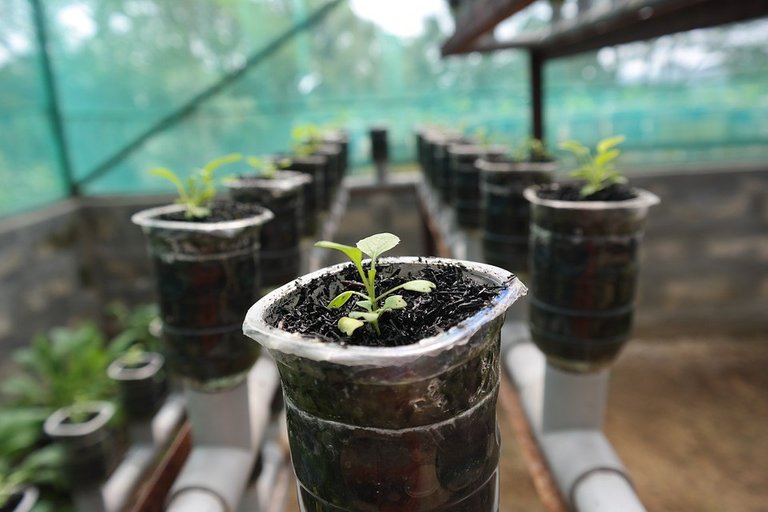
Hydroponics Technique
For those of you who are studying or already cultivate the field of planting plants by hydroponic way, then the following article is perfect for you.
Hydroponic cultivation as we all know, is a method of planting crops without using soil as a medium for planting.
However, using water media by maximizing the appropriate use of nutrient solutions of plants with appropriate and appropriate doses.
Excess Hydroponics Cultivation System
- Overcome the problem of unavailability of soil for planting medium
- Minimize disease problems in plants common to plants grown on the ground
- Possible supply and sustainable planting.
- Get more results with the same area of planting
- The quality of the results is better than the soil media
- Less use of water and fertilizers because planned and measurable.
That is the 6 advantages of cultivation of plants with hydroponic methods. Of course all the methods there are advantages and disadvantages.
Including hydroponics which also has the following deficiencies:
Disadvantages of Hydroponics Cultivation System
- The initial capital is quite large, namely the provision of tools and equipment, media and nutrition.
- Need more care and extra attention
- It needs considerable knowledge of knowledge about the plants and their needs
- The spread of infectious diseases is very easy to happen.
That's enough the lack of hydroponic cultivation. Hopefully you will be interested to learn more about the next hydroponic method.
Next will be discussed about hydroponics techniques for landless farming that you can do yourself.
Hydroponics Technique Based on Nutrition Flow
In general, cultivation using hydroponics techniques is classified into two types if based on the flow of nutrients used ie: circulating system and non-circulatory system.
1. The system circulates
Circulatory system is also called rotary system where the nutrient water used as the plant needs will fall back and flow through the roots to a shelter.
Furthermore, the nutrient water in the shelter will be reused in plants with the help of pumps or the like to drain it.
This system has a deficiency that can cause changes in pH levels in water which of course is not good for plants. This will need to be checked regularly by the farmers.
2. Non-circulation system
This system is also called a disposable system in which nutritional water is used as the fulfillment of the needs of plants if there are advantages then not recycled but will be immediately disposed of.
It sounds extravagant indeed, but actually if able to set the right time for the provision of nutrients then of course the nutrients water can be absorbed maximally, and the excess water becomes a little.
Well, that's 2 types of hydroponic cultivation techniques that you need to know first. Next we will be more detailed to distinguish hydroponic cultivation techniques in the hope that later you can choose which techniques are easy and effective to apply.
Hydroponic Cultivation Techniques
Next will be discussed about hydroponic cultivation techniques in the hope that you can choose which techniques are appropriate, easy, and effectively applied.
At least, there are 6 techniques known in the hydroponics system, namely:
1. Water culture system
If translated freely in the Indonesian language, then the water culture system can be interpreted as a method of planting hydroponics floating raft system.
This technique is quite simple in its application and the concept is to let plant roots float in nutrient water so that plants will get nutritional intake for 24 hours a night non-stop overnight.
The tools and materials needed to make the floating raft system are as follows:
- Shelter or good for water nutrition
- Media planting, can be rockwool
- Netpot
- Styrofoam
- Seeds of plants
- Hydroponic nutrient solution
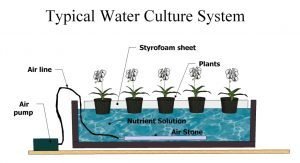
2. Drip system
Also called a drop system which is a very common hydroponic technique used because of how it works quite simple.
This hydroponics technique uses a timer as a regulator of nutritional water to the plant.
![teknik-hidroponik-sdhydroponics-com-300x197.jpg]
(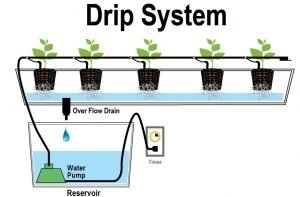 )
)
3. Aeroponic system
This hydroponics technique uses air as a medium for planting. The concept is to let plant roots hang.
Furthermore, the plant's roots are sprayed with the nutrients it needs by using sprinkler irrigation.
The tools and materials needed to make this hydroponics system are:
- Seed plant
- Styrofoam
- Media planting can be rockwool
- Sprinkler
- Water pump
- Paralon and Ethylene Pipes
- Hydroponic nutrient solution
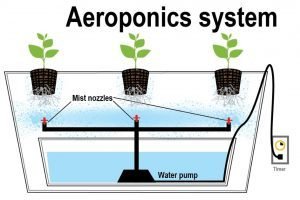
4. Wick system
How to plant hydroponics with wick system or axis system when compared with other techniques then classified as the simplest. This technique is also the most commonly used primarily by hobbyists who grow hydroponics simply at home.
The concept in this axis system is to provide plant nutrients in the growing medium through the axis used as a reservoir.
So, the roots in the indirect plants are immersed in the water. But they grow in a waterproof material such as coconut husk or rockwool.
This system can use a variety of planting media, for example coconut fiber / powder, sand pebbles, fuel husks, or rockwool as a water retention / storage material
As for the axis, can be used cotton, used cloth, or stove axis.
How to cultivate hydroponic axis systems is called the simplest and easiest method because it requires no electricity in practice. The nutrient water solution will reach the roots of the plant only by utilizing the capillary nature of water.
The end of the axis is placed in the reservoir containing the solution, while the other end is placed on the planting medium to the roots of the plant.
In addition to wetting the roots, planting media traversed by the axis also participate moist by nutritional solution later.
In addition to simple, the advantages of this axis system also found in the flexibility of plant roots to breathe suck air along with water nutrition.
As we know, sufficient air intake is also required for plant growth in addition to nutrient water.
Another advantage is when the nutrient solution in the reservoir / reservoir is exhausted, it can be refilled again without using the pump easily, unlike other hydroponics techniques.
.jpg)
5. Ebb and flow system
Also called tidal system in which nutrients or fertilizers are provided by soaking or inundating planting media / root zone for a certain period of time. After that, the nutrients will be returned to the shelter.
The working principle of this system is to pump the nutrients into the container containing pots that have been filled with planting media placed on it.
A pump is connected to a timer which can then adjust the length and period of flooding. At the bottom of the tub is installed siphon which is useful to drain nutrients to the shelter automatically.
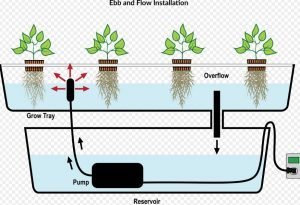
6. NFT system
In practice this NFT system is to put the plant on styrofoam with roots allowed to dangle. Styrofoam is then placed on a 5% sloping gang or down 5 cm / m when installed.
In the gutter is then flowed with nutrients of 3-4 mm of water both in turn (maximum limit is not watered usually 10 minutes) or continuously. Water of nutrients that have been flowed into the gutter then returned lage into the shelter.
The advantages of this NFT technique are the plants can grow faster, the quality of the results is maintained, and can be produced off season products that can be harvested when needed. Meanwhile, the deficiency is the nutrients used for crop needs can cause the immersion pump to break down. If there is a failure of pumping or electrical failure, then certainly the plant does not get the nutrients to survive.
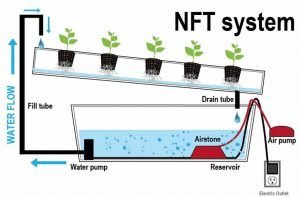
Thus information about simple hydroponics techniques that you can make reference to add your insight about the cultivation of plants without soil.
If you need more detailed information please ask directly in the comment field below this post.
Thank you for visiting, hopefully useful. Regards.
Nice blog is very interesting and clear, I will restem to my followers